From Solid to Liquid: Bus Tour
As part of the Flux Factory's summer series, Going Places, Doing Stuff 2, the Solid to Liquid bus tour headed out of New York on a veggie oil school bus to explore connections between local sites and a newly navigable Northwest Passage. The tour connected local sites to the resource and land claims currently underway in the melting passsage. We followed its metaphorical path through the multi-modal transport zone surrounding the high-volume Port of NJ.
For companies and countries with oil interests, one of the most compelling aspects of the melting of the Arctic is the presence of oil and gas. The coast of NJ has long been dominated by oil and natural gas - it was the terminus of the first pipeline in the world, delivering oil from western Pennsylvania.
Beyond the highways, railways, and petroleum facilities, Kearny Marsh is an area of the Meadowlands that is not currently tidal. Surrounded to the north and south by landfills and bisected by a disused railway connecting the industrial areas of northern New Jersey to New York City, the marsh feels simultaneously lush and alien. We entered the marsh as a terrestrial analog for Devon Island, which is itself utilized by NASA and the Mars Institute as a terrestrial analog for the moon and Mars.
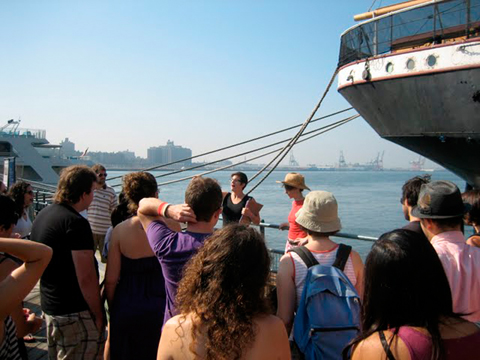
The tour meets from the South Street Seaport in Manhattan, historic hub of commercial shipping in NY (and right next to a subway stop).
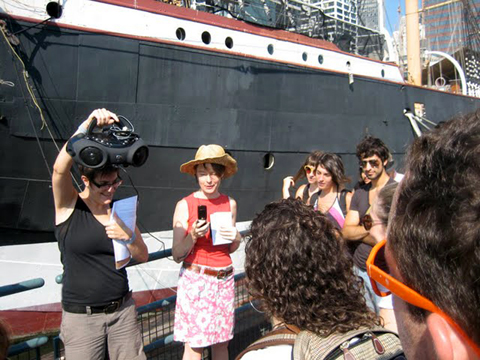
On the phone with the Captain of a vessel that was navigating the NW Passage during the summer of 2009.
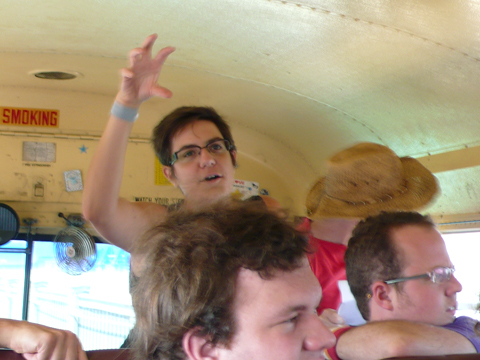
On the Vroom Collective's veggie oil bus, Siobhan talks about the areas of NJ that can be seen from the Pulaski Skyway, including the terminus of the world's first oil pipeline.
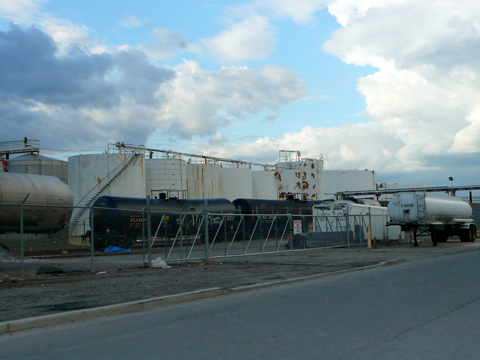
Desecending from the bridge, we head south through the tank farms towards Elizabeth.
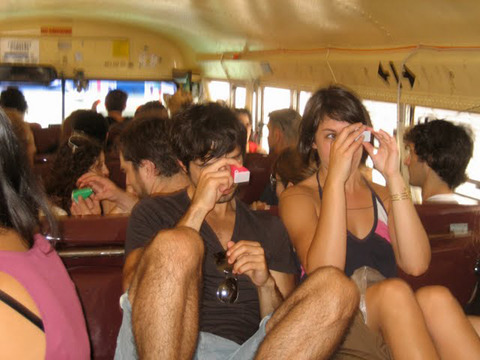
Tour participants pass key-chain picture viewers customized with images from the NW Passage.
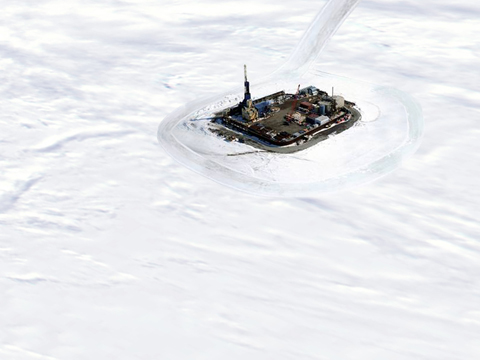
One of the images: BP's Northstar facility.
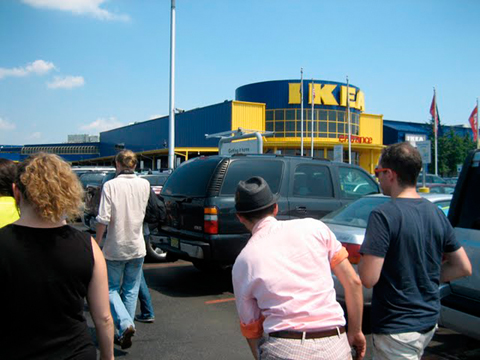
First stop in the multi-modal transport zone in Elizabethport. The tour took advantage of Ikea's wide-view windows to get a sense of the Port of NJ and the surrounding transport zone.
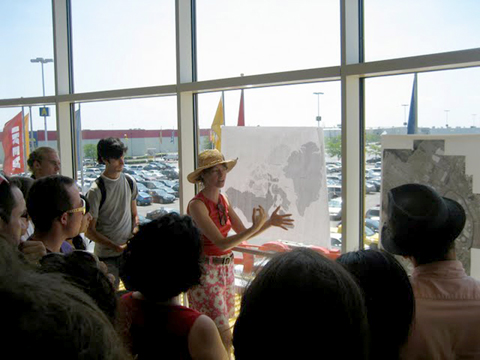
Carolyn shares information about the content of the containers surrounding us. Port of NJ is the third largest port in the country by volume, buoyed by the expansion of trade with Asia.
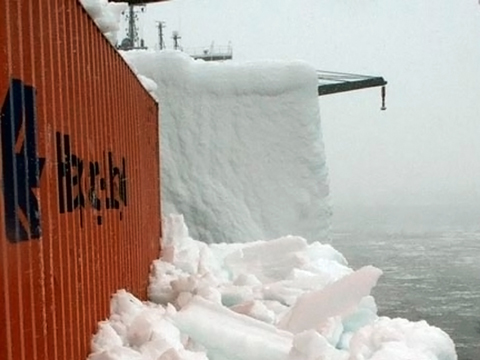
The melting of the Passage could reduce travel distance to China by over 7000 miles and reduce the size restrictions imposed on vessels by the width of the Panama Canal.
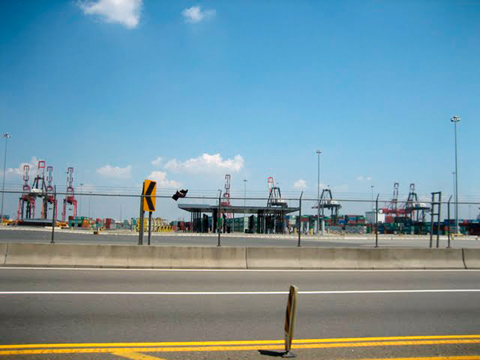
The tour headed down into the port.
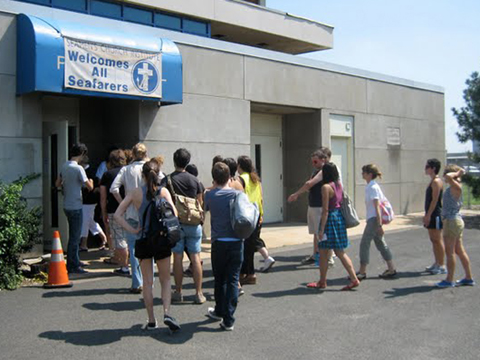
Visiting one of the only areas of the port outside the security zone: The Seamen's Church Institute. The institute provides services, chaplaincy, and legal aid.
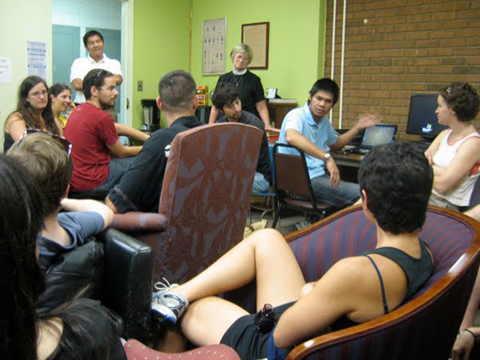
Two of the chaplains spoke with us about labor issues on ships of a variety of origins. A mariner checking his e-mail jumped in to describe his most recent voyage from China to NY.

Next, the tour travelled beyond the transport zone and between the landfills - out into Kearny Marsh, a secton of the Meadowlands.

The tour headed out onto Devon Island in the High Arctic, using the marsh as a terrestrial analog.

In turn, NASA uses Devon Island as a terrestrial analog for Mars, rehearsing mining and agriculture activities, among other research projects.

Practicing navigation with information gathered from an aerial perspective is a key element in the research.

With a satellite map of the marsh from 30,000 feet in hand, tour particpants paddled out into the marsh.

The day ends with participants exploring the passageways in the marsh.


















